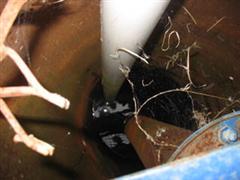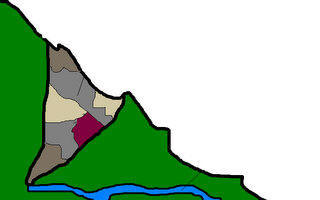
This is a photo of what a bore looks like when you look down the inside. (This is only a four metre-deep bore.)
A bore is a hole drilled into the ground to access the water below the surface. A bore can vary in size, from less than three metres deep to more than three hundred and fifty metres deep. In New Zealand the maximum depth of a man-made bore is two hundred and fifty metres down. The bigger the bore the more it costs as you need more specialised equipment which is not regularly available in New Zealand. That is why there are not many, really deep bores in New Zealand.
The water under the ground comes from high up in the mountains. The water falls down stratas and runs down the mountains underground. If the bore is deeper than the mountain is tall, then the water won't flow out of the bore. It would have to get pumped, which costs a lot of money. Nobody can tell if you are pumping out of an underground river or a lake etc.
Stratas
Definition: A strata is a deep crevice-like hole in the ground in the mountains. It is made of many different soils and silt which hold water that seeps into the ground.
A strata is used for catching water as it melts high in the mountains and flows downwards. When the water reaches the bottom of the strata, it seeps down into underground lakes etc. These quite often end up transporting water further down the mountain. This water is used when bores are drilled into a source of underground water, and as you probably know, this water is used for irrigation, stock water etc.

This is a rough diagram of what a strata looks like.
© 2007 – Page created by: Hannah, Sam, Madeline, & Hamish


